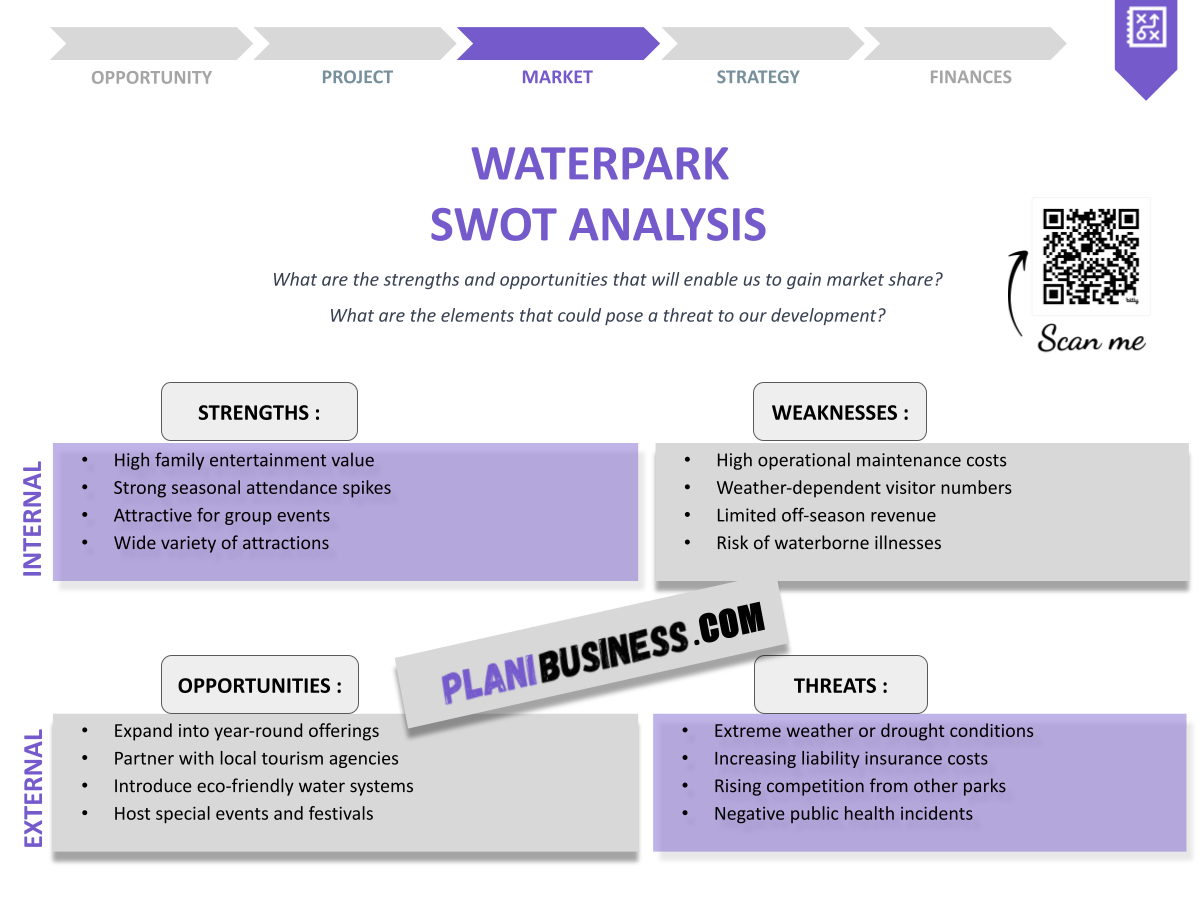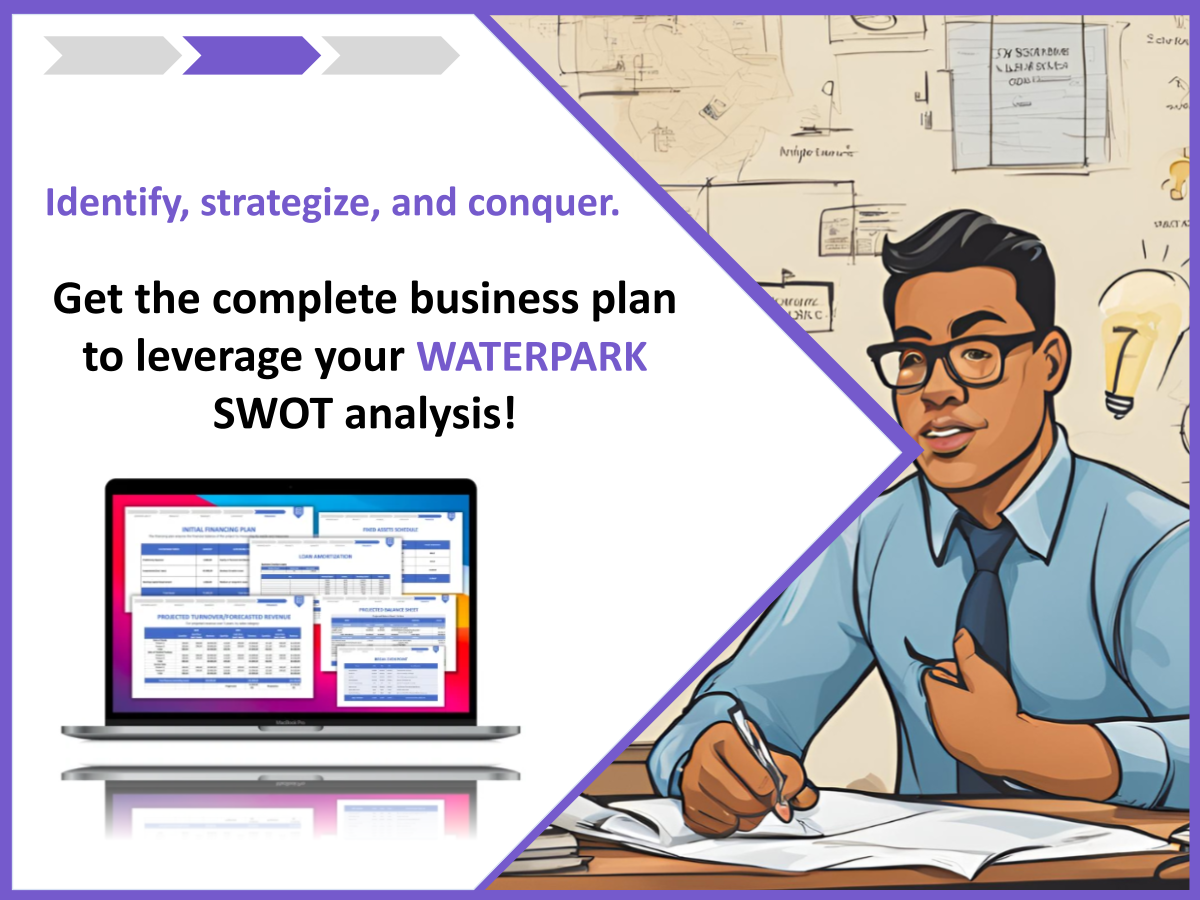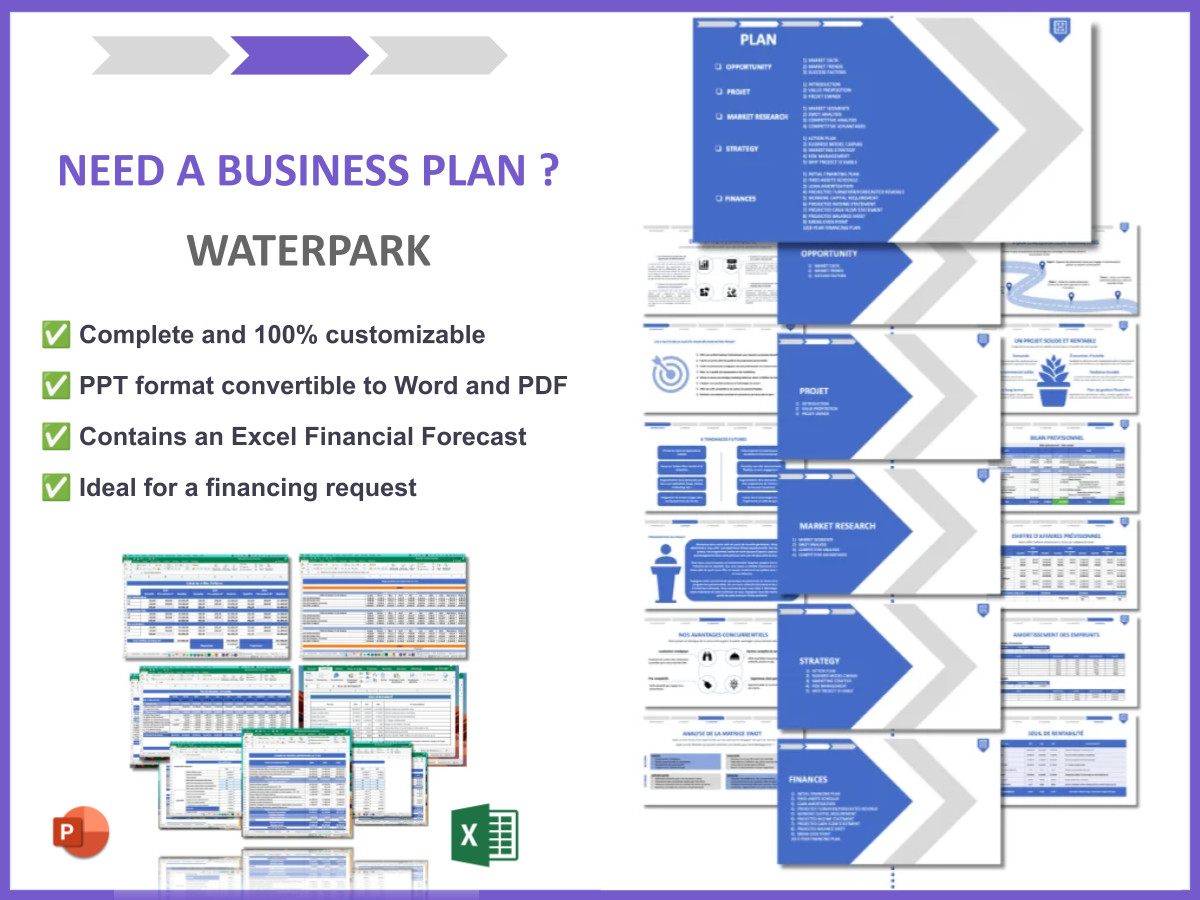Why Should You Have a SWOT Analysis for Waterparks?
Have you ever wondered why some waterparks thrive while others struggle to stay afloat? It’s no coincidence! A well-crafted SWOT analysis can be the secret sauce that sets successful waterparks apart from the rest. In this article, we’ll explore how understanding strengths, weaknesses, opportunities, and threats can help you create a winning strategy for your waterpark.
A SWOT analysis is a strategic planning tool that evaluates the internal and external factors affecting a business. It helps identify what a waterpark does well, where it can improve, potential opportunities for growth, and the threats it may face in a competitive environment.
Key Takeaways:
- Understanding your waterpark’s strengths is crucial for success.
- Identifying weaknesses helps you pinpoint areas for improvement.
- Opportunities can lead to increased revenue and customer satisfaction.
- Recognizing threats allows for proactive risk management.
How Do You Write a SWOT Analysis for Waterparks?
Creating a SWOT analysis for your waterpark is a systematic process that can be broken down into four key sections: strengths, weaknesses, opportunities, and threats.
Strengths
1. Unique Attractions: Highlighting one-of-a-kind rides or features that draw in visitors.
2. Location: Assessing how a prime location can boost foot traffic and visibility.
3. Customer Loyalty: Identifying a strong base of repeat customers and their importance.
4. Safety Record: Emphasizing a commitment to safety that enhances reputation.
Weaknesses
1. Limited Marketing Budget: Discussing how financial constraints affect promotional efforts.
2. Seasonal Operations: Addressing how being open only part of the year limits revenue.
3. Aging Infrastructure: Identifying issues with outdated rides and facilities.
4. Staff Turnover: Exploring the challenges posed by high employee turnover rates.
Opportunities
1. Expanding Demographics: Recognizing the potential of targeting new age groups.
2. Partnerships: Exploring collaborations with local businesses for cross-promotion.
3. Seasonal Events: Planning special events to draw in crowds during off-peak times.
4. Technology Integration: Leveraging mobile apps for customer engagement and convenience.
Threats
1. Competition: Analyzing the impact of nearby waterparks or attractions.
2. Economic Downturns: Considering how financial crises can reduce discretionary spending.
3. Changing Regulations: Staying informed about new laws affecting safety and operations.
4. Environmental Concerns: Addressing issues related to water usage and sustainability.
SWOT Example N°1 for Waterpark A
Waterpark A has built a solid reputation due to its innovative attractions and customer service.
| SWOT | Analysis |
|---|---|
| Strengths | Unique attractions, loyal customer base |
| Weaknesses | Limited marketing budget, aging rides |
| Opportunities | Partnerships, expanding demographics |
| Threats | Competition, changing regulations |
Summary List:
- Strong brand recognition.
- High customer satisfaction rates.
- Potential for collaboration with local hotels.
- Risks from new waterparks opening nearby.
Waterpark A's strengths lie in its unique attractions that keep guests coming back. However, the aging rides present a challenge that needs to be addressed. Exploring partnerships could help mitigate marketing budget constraints, while competition remains a significant threat.
SWOT Example N°2 for Waterpark B
Waterpark B offers a family-friendly environment, attracting visitors of all ages.
| SWOT | Analysis |
|---|---|
| Strengths | Family-friendly atmosphere, strong safety protocols |
| Weaknesses | Limited operating season, high turnover |
| Opportunities | Seasonal events, local partnerships |
| Threats | Economic downturns, environmental regulations |
Summary List:
- Strong focus on family experiences.
- Excellent safety ratings.
- Potential for themed events.
- Vulnerable to economic fluctuations.
Waterpark B shines with its family-friendly atmosphere and commitment to safety. However, the short operating season limits revenue potential. The introduction of seasonal events could increase attendance, but economic downturns pose a significant risk.
SWOT Example N°3 for Waterpark C
Waterpark C is known for its thrilling rides that cater to adrenaline seekers.
| SWOT | Analysis |
|---|---|
| Strengths | Unique thrill rides, strong social media presence |
| Weaknesses | Limited food options, high operational costs |
| Opportunities | Expanding menu offerings, partnerships with influencers |
| Threats | New competitors, changing customer preferences |
Summary List:
- Popular among thrill-seekers.
- Active social media engagement.
- Opportunities for diverse food offerings.
- Risk from emerging waterpark trends.
With its thrilling rides, Waterpark C attracts a niche market of adventure lovers. However, limited food options could deter visitors looking for a full day experience. Collaborating with food vendors could enhance offerings, but competition is on the rise.
SWOT Example N°4 for Waterpark D
Waterpark D focuses on providing a luxurious experience for guests.
| SWOT | Analysis |
|---|---|
| Strengths | High-end amenities, exclusive packages |
| Weaknesses | Higher price point, limited audience |
| Opportunities | Upscale events, corporate partnerships |
| Threats | Economic changes, competition from budget parks |
Summary List:
- Offers exclusive VIP experiences.
- High-quality amenities.
- Opportunities for corporate events.
- Risk of economic downturn affecting luxury spending.
Waterpark D’s luxurious offerings set it apart, but the higher price point limits its audience. Focusing on corporate partnerships could diversify income streams, but economic fluctuations could impact customer willingness to spend.
SWOT Example N°5 for Waterpark E
Waterpark E emphasizes eco-friendly practices in its operations.
| SWOT | Analysis |
|---|---|
| Strengths | Sustainable practices, strong community support |
| Weaknesses | Higher operational costs, niche market |
| Opportunities | Eco-tourism partnerships, educational programs |
| Threats | Competition from traditional parks, changing regulations |
Summary List:
- Strong community engagement.
- Focus on sustainability.
- Potential for educational initiatives.
- Threatened by traditional park competition.
Waterpark E's commitment to sustainability attracts eco-conscious visitors. While its niche market may limit growth, partnerships with eco-tourism initiatives could expand reach. However, traditional parks may overshadow its unique selling point.
SWOT Example N°6 for Waterpark F
Waterpark F is designed for young families, offering a safe and engaging environment.
| SWOT | Analysis |
|---|---|
| Strengths | Family-oriented design, excellent customer service |
| Weaknesses | Limited adult attractions, seasonal operation |
| Opportunities | Family packages, educational programs |
| Threats | Competition from larger parks, economic fluctuations |
Summary List:
- Great for families with young children.
- High customer service ratings.
- Opportunities for family-focused events.
- Vulnerable to larger park competition.
Waterpark F excels in providing a safe space for families, but its limited adult attractions may deter older visitors. Developing family packages could boost attendance, but the threat from larger parks is ever-present.
SWOT Example N°7 for Waterpark G
Waterpark G has a reputation for its thrilling wave pools and lazy rivers.
| SWOT | Analysis |
|---|---|
| Strengths | Popular attractions, strong community ties |
| Weaknesses | Seasonal operations, limited marketing budget |
| Opportunities | Local partnerships, themed events |
| Threats | Economic downturns, increasing competition |
Summary List:
- Known for wave pools and lazy rivers.
- Strong community support.
- Potential for themed events.
- Risks from economic factors.
Waterpark G’s thrilling attractions make it a local favorite. However, its seasonal operations and marketing budget constraints can limit growth. Exploring themed events could enhance appeal, but economic challenges remain a constant threat.
SWOT Example N°8 for Waterpark H
Waterpark H is a newcomer with a fresh approach to water fun.
| SWOT | Analysis |
|---|---|
| Strengths | Innovative designs, modern amenities |
| Weaknesses | Lack of brand recognition, limited customer base |
| Opportunities | Marketing campaigns, partnerships with influencers |
| Threats | Established competitors, economic conditions |
Summary List:
- Innovative and modern facilities.
- Opportunities for influencer marketing.
- Risks from established parks.
- Need for brand recognition.
Waterpark H’s innovative approach offers a fresh take on water fun. However, its lack of brand recognition poses challenges in attracting visitors. Strategic marketing campaigns could boost visibility, but competition from established parks is fierce.
SWOT Example N°9 for Waterpark I
Waterpark I focuses on affordability, making it accessible to all families.
| SWOT | Analysis |
|---|---|
| Strengths | Affordable pricing, family-friendly attractions |
| Weaknesses | Limited high-end amenities, crowded during peak times |
| Opportunities | Family packages, community events |
| Threats | Competition from higher-end parks, economic downturns |
Summary List:
- Affordable for families.
- Strong community engagement.
- Opportunities for family-oriented events.
- Threats from upscale competitors.
Waterpark I's affordability is its biggest strength, drawing in families looking for budget-friendly options. However, the lack of high-end amenities could deter some visitors. Implementing family packages could enhance appeal, but competition from upscale parks remains a threat.
SWOT Example N°10 for Waterpark J
Waterpark J is renowned for its immersive experiences and themed attractions.
| SWOT | Analysis |
|---|---|
| Strengths | Themed attractions, immersive experiences |
| Weaknesses | Higher operational costs, niche market |
| Opportunities | Collaborations with brands, themed events |
| Threats | Economic downturns, competition from generic parks |
Summary List:
- Unique themed experiences.
- High operational costs.
- Opportunities for brand collaborations.
- Threats from generic competitors.
Waterpark J’s themed attractions provide a unique experience that sets it apart. However, the high operational costs can limit profitability. Collaborating with brands for themed events could enhance revenue, but economic downturns pose a significant risk.
Conclusion
In conclusion, conducting a SWOT analysis is essential for waterparks to thrive in a competitive market. By identifying strengths, weaknesses, opportunities, and threats, operators can create effective strategies that cater to their target audience. Whether you’re managing an established park or starting a new venture, the insights gained from a SWOT analysis can guide your decision-making and drive success. For those looking to take the next step in planning, consider checking out this business plan template for a waterpark that can help you outline your goals and strategies effectively.
If you want to learn more about launching your own waterpark, be sure to read our article on How to Create a Waterpark? Additionally, understanding how to market your park is crucial, so check out our guide on How to Formulate a Waterpark Marketing Plan? With Example.
FAQ
1. What is a SWOT analysis?
A SWOT analysis is a strategic tool used to evaluate the strengths, weaknesses, opportunities, and threats faced by a business, including waterparks.
2. Why is a SWOT analysis important for waterparks?
It helps waterpark operators identify critical areas for improvement and develop strategies to maximize opportunities while mitigating potential threats.
3. How often should a waterpark conduct a SWOT analysis?
Regularly, ideally annually or whenever significant changes occur in the market or within the park’s operations.
4. Can a SWOT analysis help with marketing strategies?
Definitely! It can pinpoint strengths to promote and weaknesses to address in marketing efforts.
5. What are some common threats faced by waterparks?
Common threats include competition, economic downturns, and changing regulations impacting operations.
6. How can opportunities be identified in a SWOT analysis?
By analyzing market trends, customer feedback, and competitor actions, waterpark operators can uncover potential growth areas.
7. What should be included in the strengths section?
Elements like unique attractions, customer loyalty, and strong branding should be considered as strengths.
8. How can weaknesses be addressed?
By developing actionable plans that focus on improving specific areas, such as infrastructure or marketing.
9. What role do environmental concerns play in a SWOT analysis?
Environmental concerns can present both a threat and an opportunity for implementing eco-friendly initiatives.
10. Can a SWOT analysis be used for other types of businesses?
Yes, it’s a versatile tool applicable to any business or organization looking to assess its strategic position, including leisure industries like waterparks.







